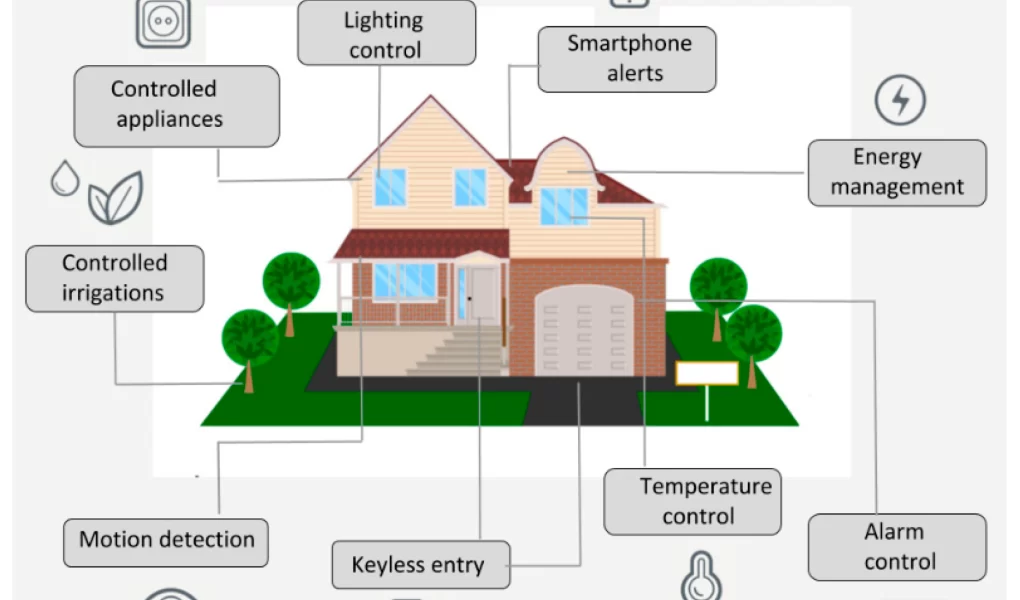With advancements in technology, our homes are becoming more intelligent and more connected than ever before. And at the heart of this revolution lies Bluetooth technology. Devices of different types can communicate with each other using the technology. You might already be familiar with Bluetooth as a wireless connection for your phone or headphones, but did you know it also plays a crucial role in transforming our homes into intelligent spaces? We will delve into the power of Bluetooth for smart home devices. We will explore its evolution over the years and discover how it has become an integral part of creating seamless connectivity within our living spaces.
The evolution of Bluetooth for smart home devices
Bluetooth technology has come a long way in smart home devices. Initially designed for wireless communication between mobile phones and headsets, Bluetooth has rapidly evolved to accommodate the demands of an increasingly connected and automated world. In its early stages, Bluetooth was limited by range and connectivity issues. However, with technological advancements, Bluetooth Low Energy (BLE) was introduced, allowing for longer battery life and improved range. This innovation opened up new possibilities for integrating Bluetooth into smart home devices. Bluetooth is widely used in various smart home applications such as security systems, lighting control, thermostats, speakers, and kitchen appliances. The ability to connect multiple devices seamlessly within a short-range network makes Bluetooth an ideal choice for creating a truly interconnected smart home ecosystem.
Benefits of using Bluetooth in smart homes
Bluetooth technology has revolutionized how we interact with our devices, and its impact on the world of smart homes is no exception. With its wireless capabilities, Bluetooth offers many benefits that make it an ideal choice for connecting and controlling various devices within your home. One of the significant advantages of using Bluetooth in smart homes is its simplicity and ease of use. Unlike other wireless communication protocols, Bluetooth doesn’t require complex network configurations or extensive technical knowledge to set up. You only need a compatible device and a simple pairing process to connect your smart home devices seamlessly. Another benefit of Bluetooth is its low power consumption.
Popular smart home devices that use Bluetooth
One of the most common Bluetooth-enabled smart home devices is the smart speaker. These compact and stylish speakers not only provide high-quality audio but also serve as a central hub for controlling other connected devices in your home. With a simple voice command, you can play music, control lighting, adjust thermostats, and even lock doors. Bluetooth-enabled security cameras are another popular choice among homeowners looking to enhance their safety measures. These cameras allow you to monitor your property remotely through your smartphone or tablet. Whether at work or on vacation, you can watch things and receive notifications if any unusual activity is detected.
Tips for setting up a Bluetooth-enabled smart home
You can start by following these tips:
- Check compatibility: Before purchasing Bluetooth-enabled devices, ensure they are compatible with your existing smart home system or hub.
- Update firmware: Ensure that all your devices have the latest firmware installed. This will ensure optimal performance and security.
- Plan device placement: Consider the range of Bluetooth signals when deciding where to place your smart home devices. Keep them within proximity to each other for a stronger connection.
- Reduce interference: Other wireless devices like Wi-Fi routers or microwaves can interfere with Bluetooth signals. Minimize this interference by placing these devices away from your smart home setup.
- Use a central hub: Consider using a central hub or control panel that supports Bluetooth connectivity for easier management of multiple devices.
- Secure your network: Protect your Bluetooth-connected smart home by setting strong passwords and enabling encryption on all connected devices.
- Test connections: After setting up each device, test their relationships to ensure they work correctly before moving on to the next one.
The future potential of Bluetooth in the smart home industry
The future potential of Bluetooth in the smart home industry is fascinating. As technology advances, we can expect even more innovative uses for Bluetooth in our homes. One area where Bluetooth holds immense promise is in improving interoperability among different smart devices. With Bluetooth mesh networking, multiple devices can seamlessly communicate with each other, creating a more integrated and connected experience for homeowners. We can anticipate faster data transfer speeds and increased range, allowing for more reliable connectivity throughout the entire home. This will enable us to control and monitor our smart home devices anywhere within our living spaces.





